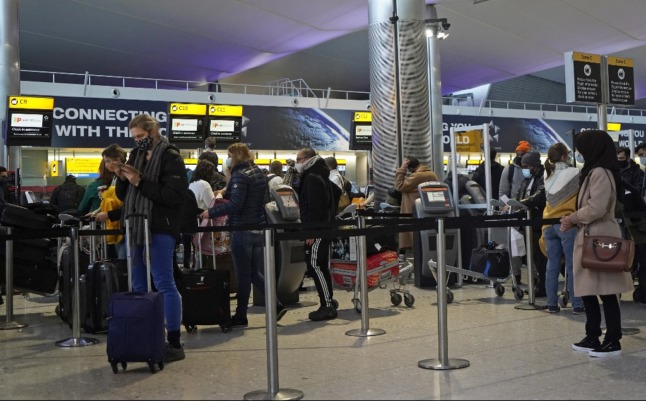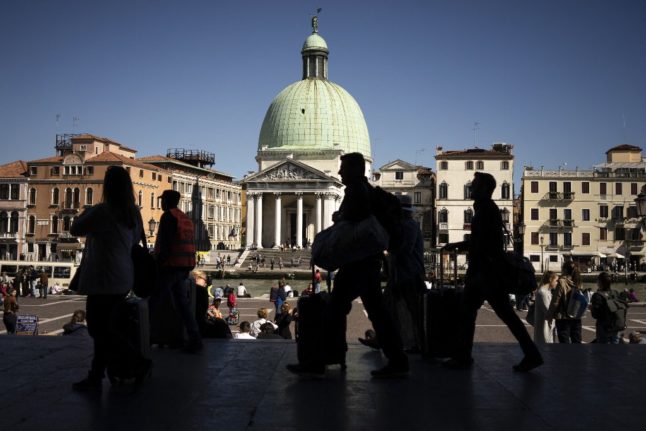What’s changed?
The UK government has done away with its amber list and having only green or red – all European countries are on the green list. This means some changes to the testing rules when travelling from Italy.
Q&A: Answers to your questions about Italy’s travel rules
The rule change is for England, if you are travelling to Scotland, Wales or Northern Ireland, click on the relevant country link.
For those countries such as Switzerland, Norway, Austria and Germany who were on the green list under the old system, the rules remain the same for fully vaccinated arrivals but have become more strict for those who are not vaccinated.
Here’s a look at what the new rules are from Monday:
Vaccinated arrivals
Fully vaccinated arrivals in England from October 4th no longer need to take a test in Italy and show it before boarding the train/plane/ferry.
Crucially, however, you will still need to book and pay for the Day 2 test in England, and this must be done before leaving Italy.
At the border you will need to show the Passenger Locator Form, and this cannot be completed without a booking reference number for a Day 2 test.
These tests have a byzantine booking system and are frequently infuriatingly expensive – find the full breakdown on booking HERE.
The Day 2 test is required even if you are spending less than two days in England (we know, it makes no sense to us either).
The UK government has said that in future Day 2 tests could be the cheaper antigen (lateral flow) tests rather than PCR tests, but there is no firm start date for this policy.

Photo: Joel Saget/AFP
Unvaccinated arrivals
People who are not vaccinated (or who do not meet the UK government definition of vaccinated) have to quarantine for 10 days on arrival. This can be done at a private home and you do not need to go to a hotel.
In addition, you will have to book and pay for both a Day 2 test and a Day 8 test before leaving.
There is an option to pay extra for a Day 5 test and end quarantine early, but be warned that quarantine does not end on Day 5, it only ends when the test results arrive.
Many readers have reported long delays in getting test results leaving them spending 9 or 10 days in quarantine anyway, but having paid more for an extra test.
Who is ‘vaccinated’?
The UK government accepts people as ‘fully vaccinated’ if they have received either Pfizer, Moderna, AstraZeneca or Johnson & Johnson vaccines and received their final dose at least 14 days before arrival.
The Italian or EU vaccination certificate is accepted as proof at the border.
After a confusing period, the UK government now accepts as fully vaccinated people who had a ‘mixed dose’, eg: one dose of AstraZeneca and one of Pfizer.
However people who only received a single dose after previously recovering from Covid – as is standard practice in Italy and other European countries – do not count as vaccinated.
From the UK to Italy
The travel rules coming into Italy from the UK remain unchanged since the last update at the beginning of September.
Fully-vaccinated travellers arriving from the UK no longer have to undergo a 5-day quarantine upon arrival to Italy. However, they have to show a negative Covid-19 test result and proof of vaccination.
Italy recognises proof of vaccination issued by the UK’s NHS both for entry to the country and in place of the ‘green pass’ within Italy to access museums, concerts and other venues.
You can keep up with the latest updates via our homepage or travel news section.



 Please whitelist us to continue reading.
Please whitelist us to continue reading.
So really the rules and costs remain more or less the same!!! I was in UK beginning of September for my mum’s birthday for 6 days. I’m vaccinated but had to do a test in Italy (now not necessary, but cost 50 euros), a day 2 test which was a home kit and cost £80! And a rapid antigen test done in a pharmacy as needed to be within 48 hours of returning to Italy which cost £80 too!!!!! Obviously the UK is hesitant to get rid of the cash cow that is covid tests for travelling! Have just come back from Montenegro where I did a rapid antigen test before returning to Italy…cost 15 euros! Ludicrous and robbery!
There are cheaper options available than £80, for example Google ‘British Airways COVID tests’ and you’ll be taken to a page that has discount codes for a number of providers. I paid £43 for a day 2 test with Randox. Even cheaper tests are available too, all you really need is the reference number for your UK PLF that you need to fill in before you depart. Randox seemed to be the best mix of value and they do process the tests quickly.
I paid £35 for my test to return to Italy.